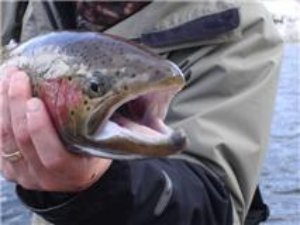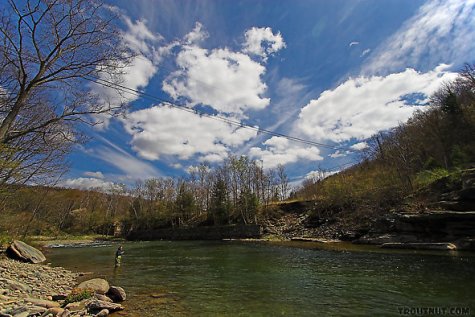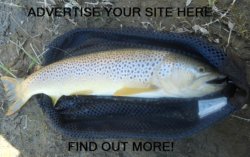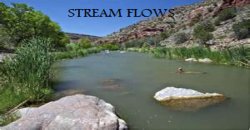|
FLY FISHING TACTICS
One of the tactics to use when fly fishing is understanding how to match the hatch and present the fly. Other tips and techniques to consider are using the double dropper fly method, and understanding water flows. Fly fishing will provide you with a lifetime of learning and enjoyment. You will learn from your experiences as well as from other people sharing their trout fishing tips. Here are some tips that will teach you how to fly fish.
PRESENTATION The presentation of the fly is extremely important, if you don’t present the fly properly you will not be successful. Presentation comes down to fly selection, and placing the selected fly into the feeding zone. Of all the tactics to use when fly fishing this one is by far the most important! Be sure to check out the river hatch chart so you have the right flies before your next trip.
One of the tactics many fly-fisherman like to use is a double-dropper when fishing. Personally I do this most often with nymphs, but some drop a nymph from a dry fly. So what is a double dropper? I have had great success where I like to fish using a Pheasant Tail and a Zebra Midge. What you do is tie on the Pheasant Tail like normal and then add about 12”-18” of tippet and tie your Zebra Midge on that. You tie the tippet to the curve in your hook so it comes directly off the back of your fly. Some people like to use opposite colors when doing a double dropper. So they would put a darker fly on top and a lighter colored fly on the bottom. Some fly-fisherman will put a dry on top, like a BWO, and put an emerger as the dropper. The purpose for the double dropper is to catch the attention of the fish with the first fly. Once they see the first fly, hopefully they will also see the second fly and strike. Give this method a try and see what happens. It won’t double your fish count but it could add to it each time.

IDENTIFYING WHERE THE FISH ARE One of the other very important tactics to understand is that you need to be able to read the water to determine where you think the fish will be so you can be productive. That is easy during a hatch when you see the fish hitting on the top of the water. But what about when everything that is being gobble up is underneath the water surface? Some of the obvious spots will be along the banks where there is cover and behind obstructions where the current is not too strong. Here are a couple more. When a big flat area or pool narrows up to go into a run or riffle you will find them just before the run. The wide river will funnel into a narrow stretch and it will pick up speed. This funnel is bringing hundreds of insects into this tight range and the fish know its coming. The fish will hold in the seams in the slower water on both sides of the fastest part of this area. Then they can dart in and out of the fast water eating the flies as they drift by. Cast upstream of this area and try to get your fly to drift through these seams. Fish-on! Another area is when a riffle or run dumps into a pool. The water is going from one level of flow to a deeper level and often times there will be a slight ledge at the end of the riffle area that the water goes over. If the ledge exists the fish can hold just below the fast current and eat the insects that are dropping off the ledge. The momentum of the water will carry the insects to where the fish are holding, and the holding fish are in a slower current so they don't have to spend much energy to eat these bugs. Cast into the run and let the fly drift out through this ledge area and beyond to where the current really slows down. Be alert because many times you will hook them at the end of your drift.

Leave fly fishing tactics page and return to home page.
|
Support our Website
View one of these related sites.

Sign up for Fish On News Letter
Receive regular newsletters about fly-fishing. Featuring great specials from our affiliate sponsors, new fish photos, tactics, product reviews and other fly-fishing articles. Fill out the form below to subscribe. Fish On!
Most Searched States
Montana
Colorado
Alaska
Oregon
Washington
North Carolina
California
Florida
Idaho
Utah
Stock Assault
Revolutionary Stock Trading Software proven to generate profitable winning trades on Autopilot in only one hour a day. State-of-the-art Artificial Intelligence. Click Here!
ROULETTE SYSTEM
Very best manual showing how to profit from online or real Casino’s Click Here!
Attract & Seduce Women
Learn how to meet, attract and seduce women -- from a woman. Best selling attraction and seduction guide for over 8 years. Click Here!
Trading Pro System
Make money regardless of whether the market goes up or down. Better that forex, penny stocks, day trading and swing trading. Over 24 hours of video. Click Here!
Click below for stream flow data
This is nationwide data, select your state, click real time data, then choose location. Having stable water conditions makes for better fishing.






